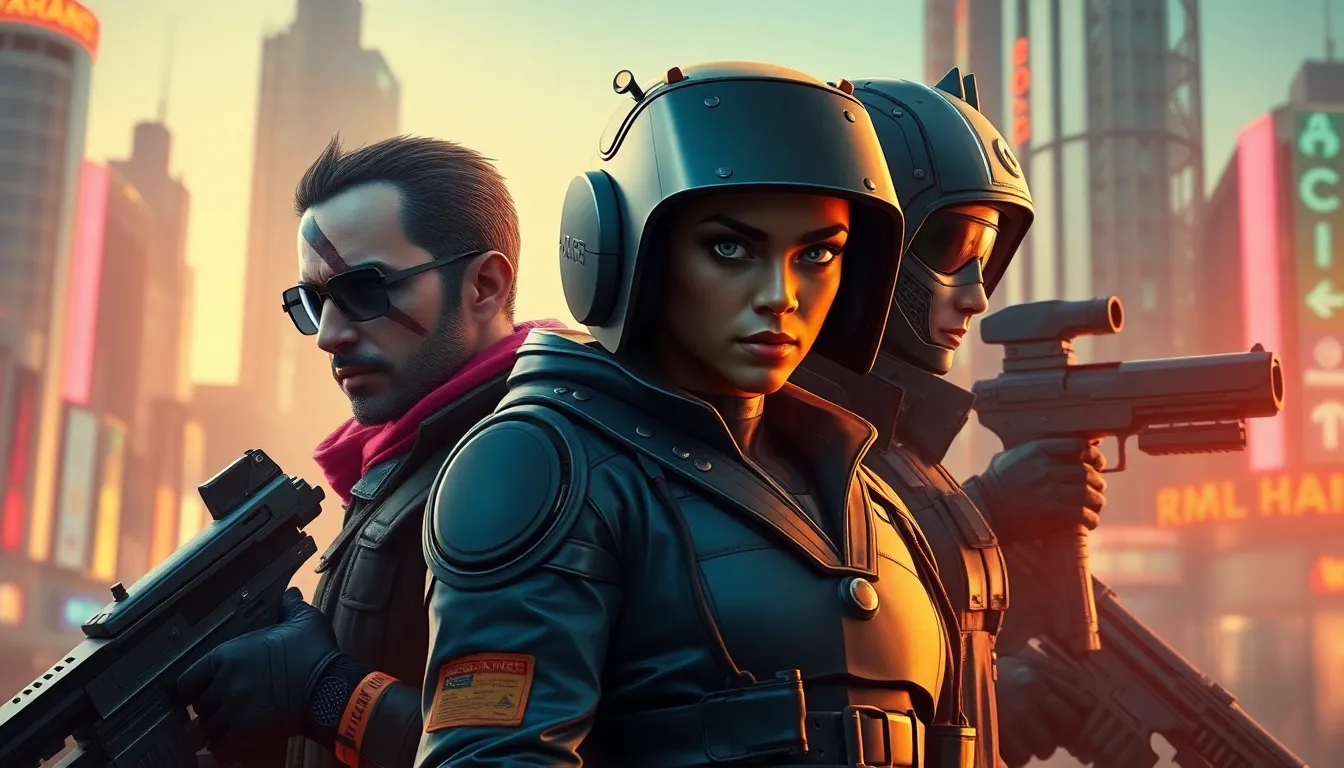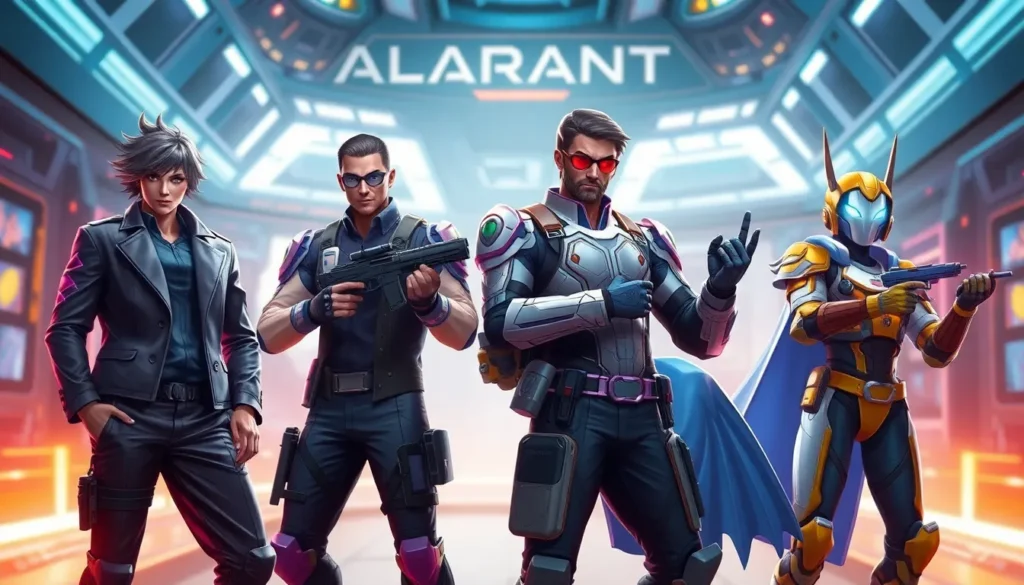Table of Contents
ToggleIn the fast-paced world of VALORANT, choosing the right agent can make all the difference between victory and defeat. With a diverse roster of characters, each equipped with unique abilities, players often find themselves debating which agents truly stand out. This is where a well-crafted tier list comes into play, helping players navigate the complexities of agent selection based on their strengths and weaknesses.
Understanding the current meta is crucial for any aspiring player. An effective tier list not only reflects the latest game updates but also considers player performance and strategic versatility. Whether you’re a seasoned pro or just starting out, knowing which agents excel in various situations can elevate gameplay and enhance team dynamics. Dive into this comprehensive tier list to discover which agents are dominating the scene and how they can fit into your winning strategy.
Overview of VALORANT Agents
VALORANT features a diverse roster of agents, categorized into four distinct roles: Duelists, Controllers, Initiators, and Sentinels. Each role serves a unique purpose within the gameplay structure, influencing team dynamics and strategies.
Duelists
Duelists excel in offensive engagements, focusing on fragging and securing kills. They possess abilities that enhance their combat effectiveness, allowing for aggressive playstyles. Agents such as Jett, Reyna, and Phoenix exemplify this role, showcasing high mobility and self-sustain potential.
Controllers
Controllers manage the battlefield by utilizing their abilities to block enemy sightlines and manipulate areas of effect. Their tools can slow down or deny enemy movements, creating safe spaces for their teammates. Notable controllers include Omen, Viper, and Brimstone, all contributing to strategic map control.
Initiators
Initiators pave the way for teammates by gathering intel and disrupting enemy positions. They specialize in creating opportunities for entry, using gadgets to provide crucial information about opponents. Agents like Sova, Breach, and KAY/O play essential roles in initiating engagements and supporting team advances.
Sentinels
Sentinels provide defensive support to the team, focusing on healing and strategic area control. Their abilities often include healing teammates or deploying defensive tools to safeguard critical locations. Sage, Cypher, and Killjoy stand out as key agents in this role, enhancing team survivability and map security.
Each agent’s abilities and role significantly impact overall team performance, making the selection of agents crucial for successful gameplay. Understanding these roles aids players in forming balanced teams and adapting strategies according to the evolving meta.
Understanding the Tier List

The tier list categorizes VALORANT agents based on their effectiveness in various scenarios. It serves as a vital resource for players looking to maximize their team’s potential.
Criteria for Ranking Agents
Agents rank in the tier list based on several key criteria:
- Ability Synergy: Evaluation of how well an agent’s abilities complement others. Agents with versatile skills that enhance team dynamics usually rank higher.
- Meta Relevance: Assessment of an agent’s performance in the current game environment. Shifting game updates can elevate or diminish particular agents’ viability.
- Win Rate Data: Analysis of win rates across competitive matches provides insight into an agent’s effectiveness. Higher win rates signal stronger agents in the prevailing meta.
- Player Performance: Review of player statistics and feedback helps gauge an agent’s reliability in skilled hands. Consistently high performance marks an agent as top-tier.
Importance of Team Composition
Team composition significantly influences gameplay success. Effective compositions include:
- Role Balance: Stratification of agents across all four roles (Duelists, Controllers, Initiators, Sentinels) ensures a well-rounded approach, enabling diverse strategies.
- Counter Picks: Selection of agents that counter specific enemy agents enhances adaptability. Teams that can disrupt opponents’ plans gain a tactical advantage.
- Ability Coordination: Harmonization of agents’ abilities fosters impactful plays. Teams that strategically use abilities together can dominate key moments in matches.
- Adaptation and Flexibility: Teams that can switch agents based on opponents’ strategies maintain an edge. This fluidity allows for dynamic responses to game shifts.
Understanding these criteria and compositions allows players to make informed decisions, enhancing their gameplay experience and team success in VALORANT.
VALORANT Agent Tier List
The VALORANT agent tier list categorizes agents based on their effectiveness in the current meta, aiding players in choosing optimal team compositions. Below is a breakdown of agents across various tiers.
S Tier Agents
S Tier agents exhibit exceptional abilities and dominate the current meta. They significantly enhance team strategies and frequently impact game outcomes. Key examples include:
- Jett: Her mobility and powerful ultimate provide swift engagements.
- Chamber: Offers high damage with teleportation abilities, creating strong positioning advantages.
- Cypher: His intel-gathering capabilities allow for effective map control.
A Tier Agents
A Tier agents excel in many situations and contribute strongly to team performance. Though slightly less dominant than S Tier agents, they still play crucial roles. Notable agents are:
- Sova: Provides valuable reconnaissance through his recon abilities.
- Reyna: Her self-sustain and kill-based power grants her great solo potential.
- Phoenix: Features healing abilities and flashbangs, offering significant utility.
B Tier Agents
B Tier agents perform well but may require specific team compositions to maximize their potential. They offer utility and can impact games with strategic play. Examples include:
- Omen: His smokes and teleportation provide versatility in map control.
- Brimstone: Brimstone’s artillery strike and smoke cover facilitate area denial.
- Raze: She delivers high damage with explosive abilities, though dependent on favorable engagements.
C Tier Agents
C Tier agents struggle in the current meta, often needing strong support from their teammates to succeed. They can still be viable in certain scenarios. Agents in this tier comprise:
- Killjoy: While her sentries and lockdown can be effective, they require correct positioning.
- Sage: Offers healing and resurrection but can be outperformed by more aggressive agents.
- Viper: Viper’s abilities demand excellent team coordination, limiting her effectiveness.
D Tier Agents
D Tier agents are currently the least effective in competitive play, often overshadowed by better-performing counterparts. They may struggle to provide valuable contributions. These agents include:
- Yoru: His abilities face challenges due to predictability and complexity.
- Breach: Despite utility, he often lacks synergy compared to other initiators.
- Astra: Astra’s unique gameplay style can be too punishing and challenging for most players.
Understanding these tiers allows players to make strategic decisions when forming teams and adapting to the ever-changing VALORANT meta.
How to Choose the Right Agent
Selecting the right agent in VALORANT hinges on several key factors. Players must assess personal playstyle, team dynamics, and the current meta to maximize effectiveness.
- Assess Playstyle
Players should identify their preferred roles and strengths. They must consider whether they excel at aggressive engagements or prefer supporting teammates. For example, a player thriving in high-tempo scenarios might choose a Duelist like Jett or Reyna, while one with a tactical approach may lean towards Controllers like Brimstone or Omen.
- Evaluate Team Composition
Players must ensure a balanced team by selecting agents from different roles. A well-rounded team includes a mix of Duelists, Initiators, Controllers, and Sentinels. This diversity promotes adaptability during matches.
- Stay Informed About the Meta
Players should keep abreast of the current meta and tier list updates. Understanding which agents perform best under current conditions aids in selecting an effective champion. Regularly revisiting tier lists based on win rates and player performance can optimize agent choices.
- Understand Agent Abilities
Players must familiarize themselves with agent abilities and how they synergize within a team. Effective coordination of abilities among agents can create powerful combinations. For instance, pairing an Initiator like Sova with a Duelist can lead to surprising enemy engagements.
- Consider Fill Roles
Players should be versatile, avoiding specialization in one specific role. Flexibility contributes positively to team dynamics. Agents that fit multiple roles, like Phoenix or Omen, can adapt to various situations, providing strategic advantages.
By examining these aspects, players enhance their chances of choosing the right agent, leading to improved performance and greater success in VALORANT matches.
Choosing the right agent in VALORANT is crucial for achieving success in matches. A well-structured tier list provides valuable insights into the current meta and helps players identify the most effective agents for their strategies. By understanding the roles and strengths of each agent, players can enhance their team dynamics and adapt to various challenges.
Staying updated on the tier list and evaluating personal playstyles allows players to make informed decisions. This knowledge not only boosts individual performance but also contributes to overall team success. Embracing the nuances of agent selection will empower players to navigate the competitive landscape of VALORANT with confidence.





